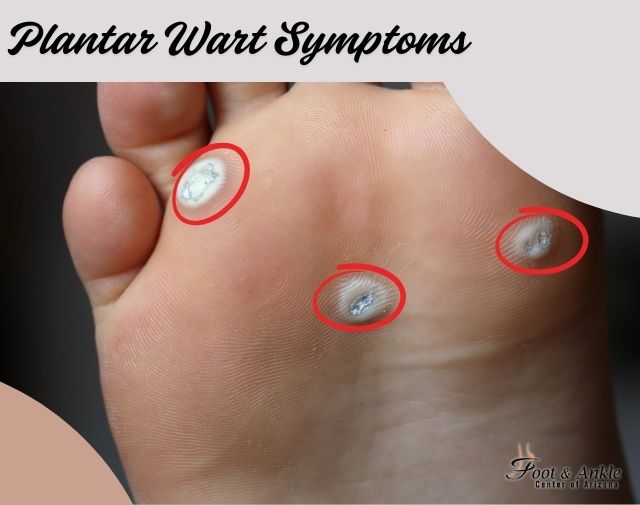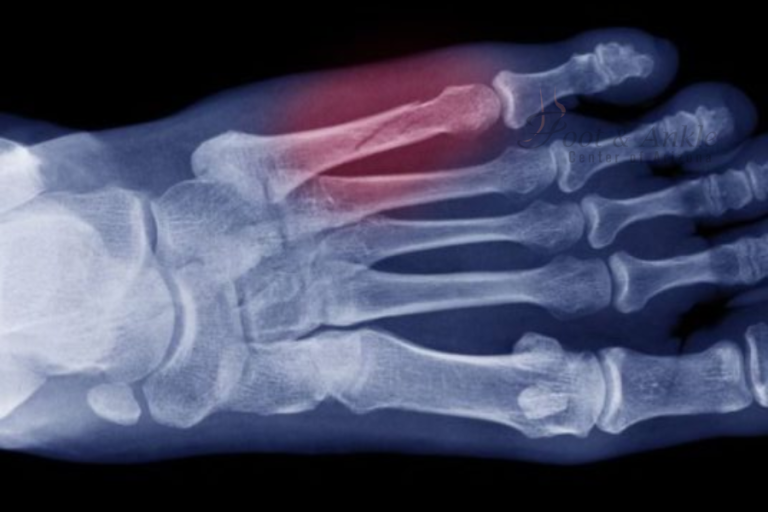Have you noticed a rough patch of skin on the bottom of your foot that’s causing discomfort or pain while walking? It might not be just a callus. You could be dealing with a plantar wart—a common but often misunderstood condition caused by a viral infection. In this post, we’ll walk you through the plantar wart symptoms, what causes them, and how you can treat them effectively.
What Is a Plantar Wart?
A plantar wart is a small growth that typically appears on the soles (plantar surface) of your feet. It’s caused by the human papillomavirus (HPV) entering the skin through small cuts or cracks. Unlike other warts, plantar warts are subjected to pressure from walking and standing, which can cause them to grow inward, making them more painful and harder to identify.
Common Plantar Wart Symptoms
Recognizing the symptoms early can help prevent the spread and make treatment easier. Here are the most common plantar wart symptoms:
1. Small, Fleshy Growths on the Foot
Plantar warts often look like small, rough, grainy bumps that may be flesh-colored, brown, or gray.
2. Black Dots in the Center
These are tiny clotted blood vessels and are sometimes referred to as “wart seeds.” They’re a hallmark feature of plantar warts.
3. Thickened Skin Over the Wart
Due to pressure from walking, plantar warts are often covered by a layer of thick, hard skin (similar to a callus).
4. Pain or Tenderness When Walking
Because the wart grows inward, it can press against the nerves in your foot, leading to discomfort or sharp pain when standing or walking.
5. Interruptions in Natural Skin Lines
Normal skin has clear, continuous lines. A plantar wart interrupts this pattern with its rough texture and border.
What Causes Plantar Warts?
Plantar warts are caused by certain strains of HPV, which thrive in warm, moist environments. Common ways people contract the virus include:
- Walking barefoot in public showers or locker rooms
- Having small cuts or abrasions on the feet
- Sharing socks, shoes, or towels with someone who has a wart
- Weakened immune systems, making it easier for the virus to take hold
Not everyone who comes into contact with HPV will develop a wart—your immune system plays a significant role.
Who Is at Risk?
Anyone can develop a plantar wart, but you’re more at risk if you:
- Frequently walk barefoot in communal areas
- Have a weakened immune system
- Are a child or teenager (their immune systems are still developing)
- Have a history of plantar warts
- Engage in athletic activities, especially barefoot sports like martial arts or swimming
When to See a Podiatrist
If you suspect a plantar wart and it’s not going away, or it’s causing pain, it’s time to see a foot specialist. You should also seek treatment if:
- The wart is multiplying or spreading
- You’re unsure if it’s a wart or another condition
- At-home treatments aren’t working
- You have diabetes or circulatory issues and notice changes in your feet
At the Foot and Ankle Center of Arizona, we provide expert diagnosis and treatment for all types of foot conditions, including plantar warts.
Treatment Options for Plantar Warts
There are several ways to treat plantar warts depending on severity and response to initial care. These include:
Over-the-Counter Remedies
Salicylic acid patches or gels can gradually remove layers of the wart, but may take weeks or months to be effective.
Cryotherapy
Freezing the wart with liquid nitrogen can destroy wart tissue, though multiple treatments may be needed.
Laser Therapy
Pulsed dye lasers can target the blood vessels feeding the wart, leading to its eventual destruction.
Minor Surgical Removal
For stubborn or painful plantar warts, a podiatrist may remove them under local anesthesia.
Immunotherapy
Used in resistant cases, this treatment stimulates the immune system to fight off the virus causing the wart.
Preventing Plantar Warts
While there’s no guaranteed way to avoid HPV entirely, you can take these steps to reduce your risk of developing plantar warts:
- Always wear shoes or sandals in communal areas like pools, gyms, and showers
- Keep your feet clean and dry
- Avoid picking at or touching existing warts
- Do not share socks, shoes, or towels with others
- Use foot powders to reduce moisture buildup
- Strengthen your immune system through healthy diet and lifestyle
Don’t Confuse Plantar Warts with Other Conditions
It’s easy to confuse plantar wart symptoms with corns, calluses, or even foreign bodies lodged in the skin. A podiatrist can distinguish between these and recommend the most effective treatment, especially when home care doesn’t work.
Conclusion
Plantar warts may be small, but the pain and inconvenience they cause can be significant—especially if left untreated. Recognizing the early plantar wart symptoms like black dots, thickened skin, and tenderness can help you take prompt action. Whether you’re dealing with one persistent wart or several, professional care is often the most effective route to recovery.
At the Foot and Ankle Center of Arizona, Dr. Kris A. DiNucci, DPM, FACFAS, offers comprehensive foot care with advanced treatment options tailored to your condition. With over 25 years of experience and a reputation for excellence in Scottsdale and Phoenix, you can trust us to help you walk comfortably again.
FAQs
Q: Are plantar warts contagious?
A: Yes, they can spread through direct contact with infected surfaces or skin.
Q: How long do plantar warts last?
A: Without treatment, they can last months or even years. Early treatment speeds up recovery.
Q: Can I remove plantar warts at home?
A: Over-the-counter options may work for mild cases, but persistent or painful warts should be treated by a specialist.
Q: Will plantar warts go away on their own?
A: Sometimes they do, especially in children, but many cases require medical intervention.
Summery
Plantar warts are caused by the human papillomavirus (HPV) and commonly appear on the soles of the feet. Key plantar wart symptoms include rough, grainy skin, black dots (clotted blood vessels), thickened callus-like skin, and pain while walking. They spread through contact with contaminated surfaces like public showers or locker rooms. High-risk groups include children, athletes, and those with weakened immune systems. Treatments range from over-the-counter solutions to cryotherapy, laser therapy, and surgical removal. Early diagnosis and professional care are vital for effective relief. Visit Dr. Kris A. DiNucci at the Foot and Ankle Center of Arizona for expert treatment.




